Custom CNC Machining Service Online
Unlock precision and efficiency with our CNC Machining Services. Specializing in high-quality metal and plastic parts, we deliver exceptional accuracy and durability for all your manufacturing needs. Perfect for prototypes, custom components, and large production runs, our advanced CNC technology ensures reliable performance and unparalleled quality. Get started on your project today!
- All uploads are secure and confidential.
- One-stop CNC machining
- 80+ materials
- 50+ surface finishing

Our CNC Machining Technologies
CNC (Computer Numerical Control) machining is a manufacturing process in which pre-programmed computer software dictates the movement of factory tools and machinery. This process can be used to control a range of complex machinery, from grinders and lathes to mills and routers. With CNC machining, three-dimensional cutting tasks can be accomplished in a single set of prompts.
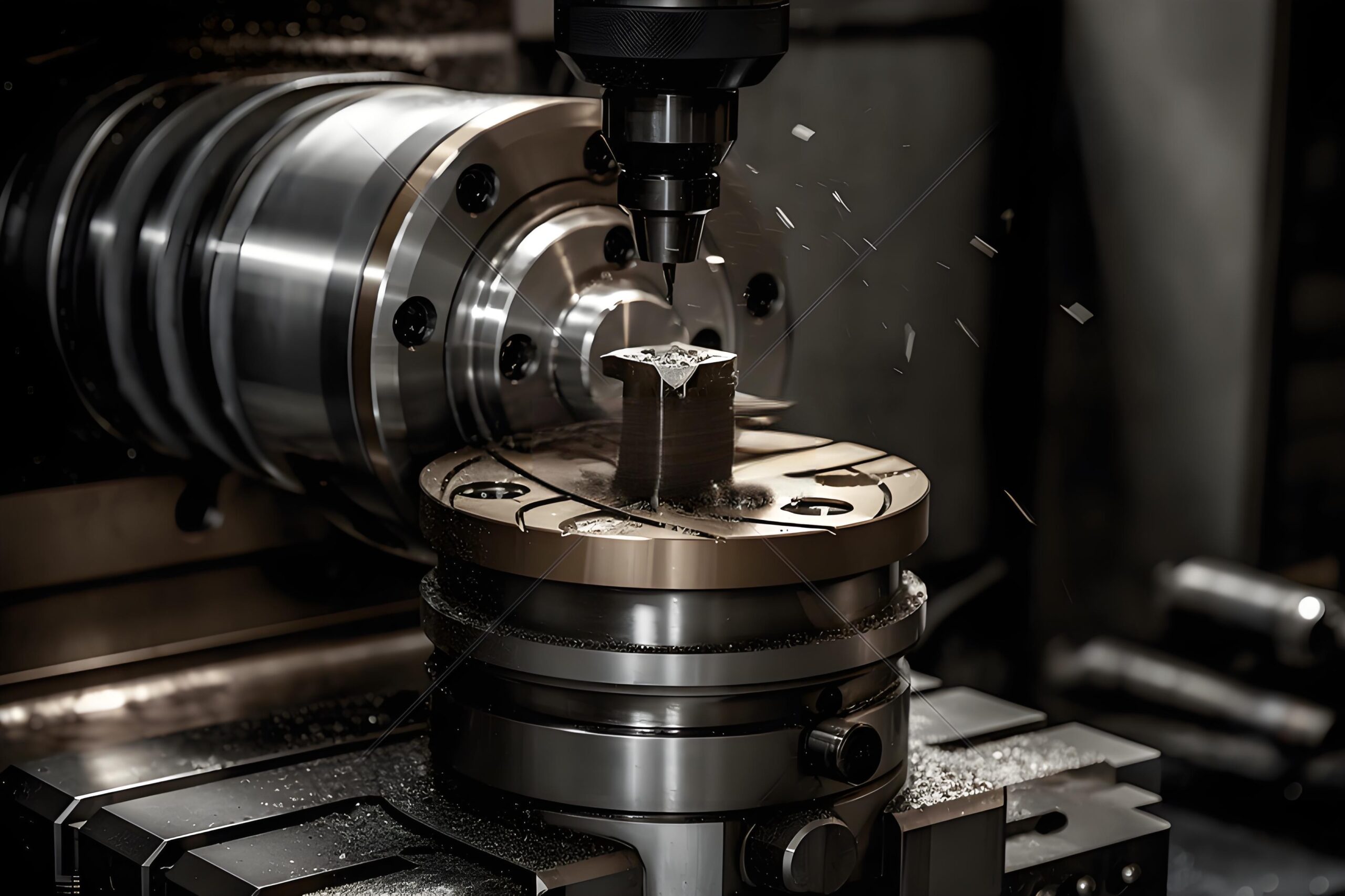
3&4 Axis CNC Milling
3-Axis CNC Milling is ideal for simple, cost-effective machining tasks with straightforward geometries.
4-Axis CNC Milling provides the capability to machine more complex parts with greater precision and efficiency.

5 Axis CNC Machining
5-axis CNC machining is the pinnacle of precision and versatility, enabling the production of highly complex and intricate parts with unmatched accuracy and efficiency. It is ideal for industries requiring high-performance components and offers significant advantages in reducing setup time, improving surface finish, and increasing overall production efficiency.

CNC Turning
CNC turning is a versatile and highly precise machining process, perfect for producing cylindrical parts and complex geometries with excellent surface finishes. Its efficiency, repeatability, and ability to work with a wide range of materials make it an essential technology in modern manufacturing.
CNC Machining Materials We Have
Aluminum Alloys

Aluminum 6061
Features: Versatile, good mechanical properties, excellent corrosion resistance, weldable, and suitable for various applications.
Applications: Aerospace, automotive, marine, and general fabrication.
Aluminum 6082
Features: Good strength, corrosion resistance, and machinability.
Applications: Structural applications, bridges, cranes, and transportation.
Aluminum 7075
Features: High strength-to-weight ratio, excellent fatigue resistance, less corrosion resistant compared to 6061.
Applications: Aerospace, military applications, and high-stress components.
Aluminum 5052
Features: High fatigue strength, excellent corrosion resistance, good workability, and weldability.
Applications: Marine environments, fuel tanks, pressure vessels, and sheet metal work.
Aluminum 2011
Features: Excellent machinability, high mechanical strength, but less corrosion resistance.
Applications: Precision machining, complex parts, and components requiring high machining speeds.
Aluminum 2024
Features: High strength, good fatigue resistance, but less corrosion resistant.
Applications: Aerospace structures, military, and high-performance automotive parts.
Aluminum 6063
Features: Good mechanical properties, excellent corrosion resistance, and good anodizing capabilities.
Applications: Architectural applications, window frames, irrigation tubing, and furniture.
Aluminum 7050
Features: High strength, good stress corrosion cracking resistance, and excellent toughness.
Applications: Aerospace components, structural parts, and military equipment.
Aluminum 3003
Features: Good corrosion resistance, good formability, and moderate strength.
Applications: Cooking utensils, chemical equipment, and storage tanks.
Aluminum 1100
Features: Excellent corrosion resistance, good formability, and high thermal and electrical conductivity.
Applications: Heat exchangers, chemical equipment, and food packaging.
Steel Alloys
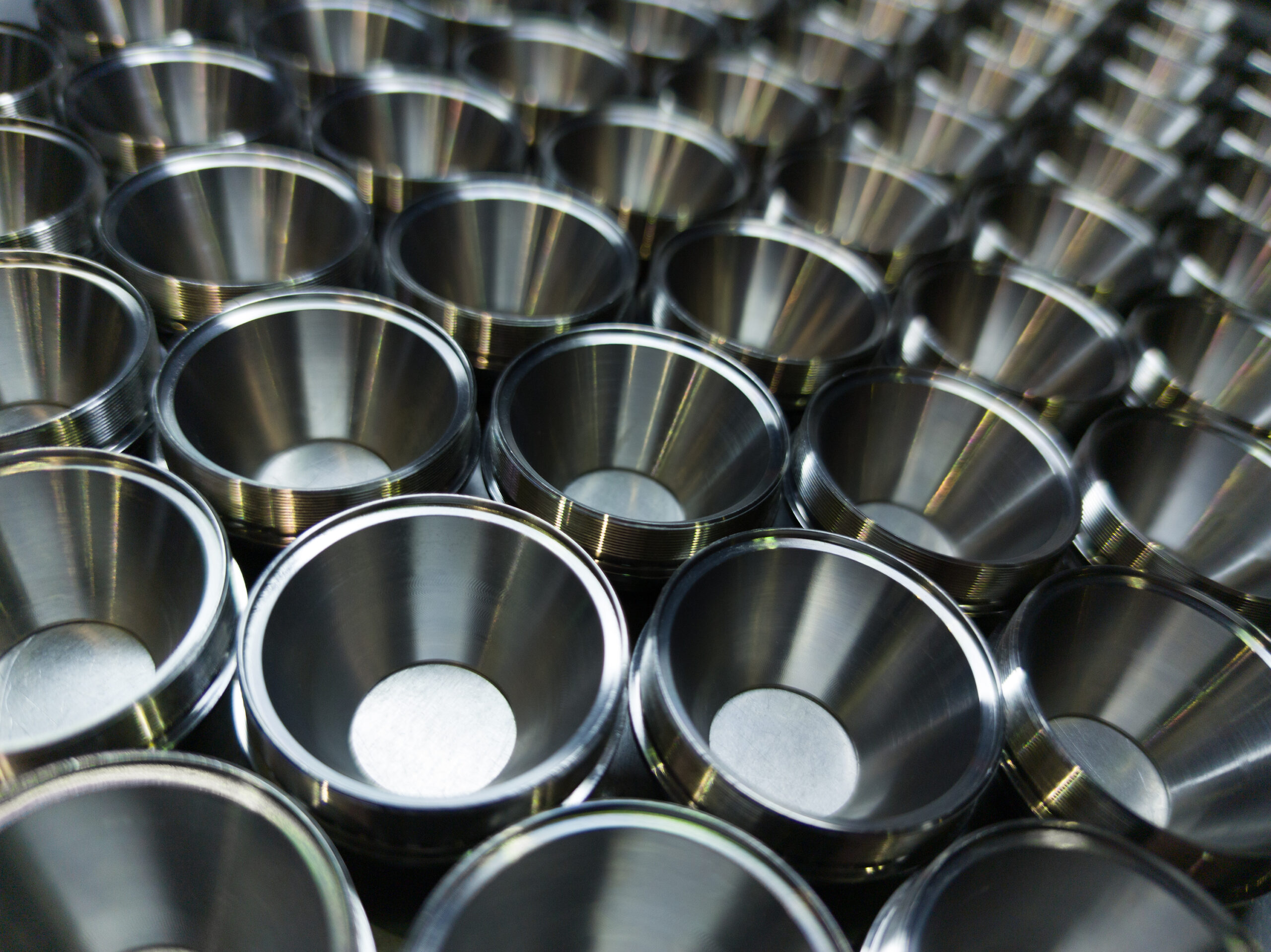
Steel C20 (1020)
Features: Good machinability, weldability, and cost-effectiveness. Lower tensile strength but easily formable.
Applications: Structural components, fasteners, automotive parts, and general fabrication.
Steel C45 (1045)
Features: Medium carbon steel with good tensile strength and impact resistance. Easily machinable and can be heat treated.
Applications: Gears, bolts, axles, machine parts, and shafts.
Steel C40 (EN8)
Features: Medium carbon steel with good tensile strength, moderate wear resistance, and machinability. Can be heat treated for enhanced mechanical properties.
Applications: Shafts, axles, bolts, screws, and general engineering parts requiring good strength.
Steel S235
Features: Low carbon structural steel with good weldability and machinability. Provides moderate strength and toughness.
Applications: Structural components, construction materials, frames, and brackets.
Steel S355
Features: High-strength low-alloy structural steel with excellent weldability, toughness, and machinability. Offers higher strength than S235.
Applications: Structural engineering, bridges, cranes, and heavy-load bearing components.
Steel 40Cr
Features: Medium carbon chromium steel with high tensile strength, good ductility, and toughness. Can be heat treated to enhance properties.
Applications: Gears, shafts, spindles, heavy-duty axles, and other components requiring high strength and toughness.
Steel 42CrMo4
Features: Chromium-molybdenum alloy steel with high tensile strength, good toughness, and wear resistance. Can be quenched and tempered for improved mechanical properties.
Applications: Gears, crankshafts, connecting rods, high-stress machine components, and automotive parts.
Steel 4140
Features: Chromium-molybdenum alloy steel with high tensile strength, toughness, and wear resistance. Can be heat treated for improved properties.
Applications: Gears, shafts, spindles, automotive and aerospace components, and high-stress parts.
Steel A2
Features: Air-hardening tool steel with good toughness, wear resistance, and dimensional stability. Easy to machine and heat treat.
Applications: Molds, dies, punches, gauges, and cutting tools.
Steel A36
Features: Low carbon steel with good weldability and formability. Offers moderate strength and is widely used in structural applications.
Applications: Structural beams, construction equipment, building frames, and general fabrication.
Steel D2
Features: High-carbon, high-chromium tool steel with excellent wear resistance, hardness, and toughness. Air-hardened for dimensional stability.
Applications: Cutting tools, dies, punches, and industrial knives.
Steel 4340
Features: Nickel-chromium-molybdenum alloy steel with excellent strength, toughness, fatigue resistance, and wear resistance. Can be heat treated to achieve high hardness.
Applications: Heavy-duty axles, crankshafts, aircraft landing gear, gears, and high-stress components in automotive and aerospace industries.
Steel Alloys
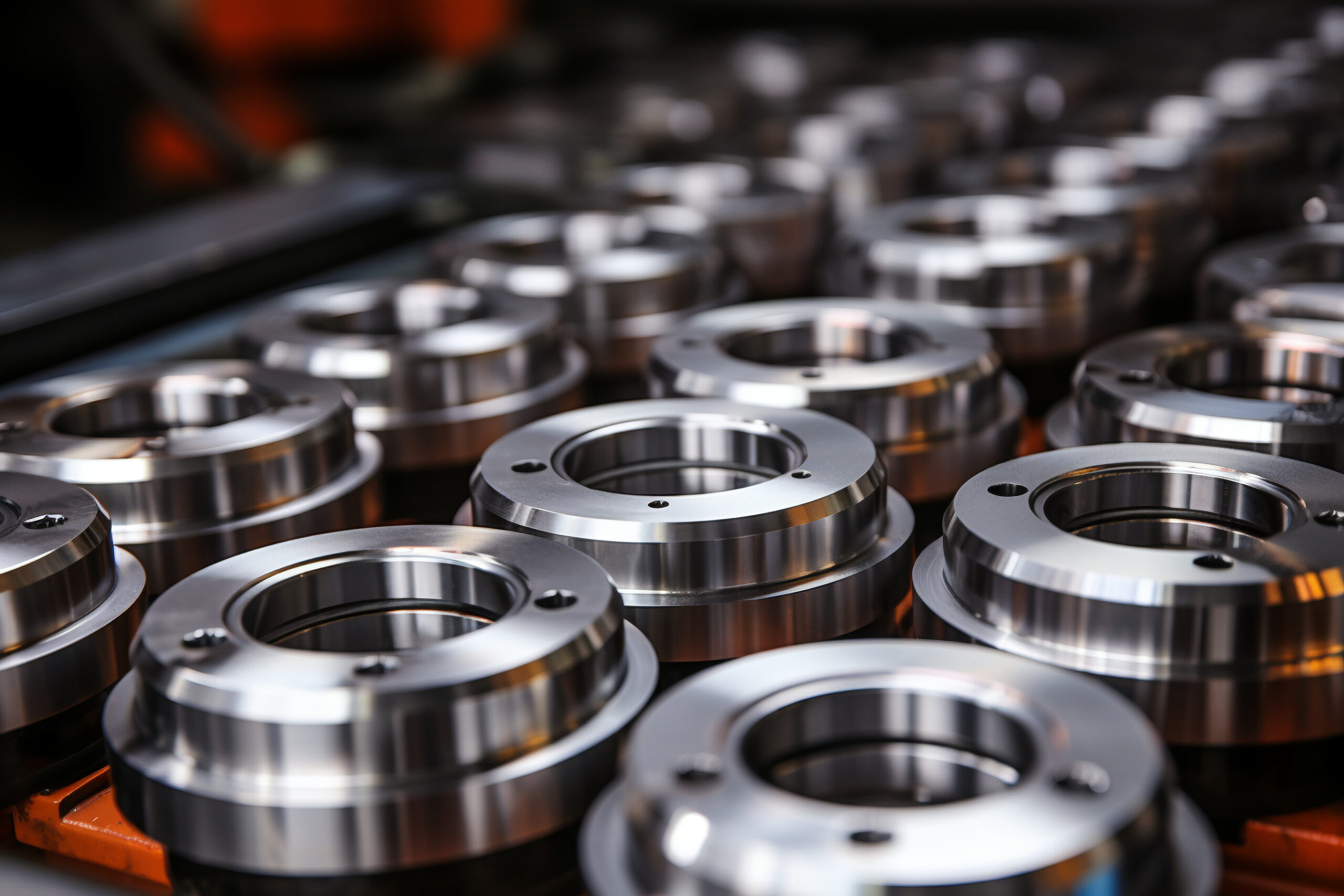
Stainless Steel 304
Features: Excellent corrosion resistance, good formability, and weldability. Non-magnetic.
Applications: Kitchen equipment, food processing equipment, chemical containers, and architectural applications.
Steel C45 (1045) Stainless Steel 316
Features: Superior corrosion resistance, particularly against chlorides and marine environments. Good mechanical properties.
Applications: Marine equipment, medical devices, chemical processing equipment, and outdoor architectural elements.
Stainless Steel 303
Features: Enhanced machinability due to added sulfur, good corrosion resistance.
Applications: Screws, nuts, bolts, and fittings requiring extensive machining.
Stainless Steel 301
Features: High strength, good ductility, and excellent corrosion resistance. Can be cold worked to increase strength.
Applications: Springs, fasteners, aircraft parts, and automotive components.
Stainless Steel 17-4 PH
Features: Precipitation hardening provides high strength and hardness. Good corrosion resistance.
Applications: Aerospace components, surgical instruments, and high-performance engineering applications.
Stainless Steel 410
Features: High strength and hardness, good wear resistance, but lower corrosion resistance compared to 304 and 316.
Applications: Cutlery, valves, and pumps, and parts requiring high strength and moderate corrosion resistance.
Stainless Steel 420
Features: High carbon content, good hardness and strength after heat treatment, moderate corrosion resistance.
Applications: Surgical instruments, dental tools, cutlery, and valves.
Stainless Steel 430
Features: Good corrosion resistance, formability, and heat resistance. Magnetic.
Applications: Automotive trim, kitchen appliances, and other decorative applications.
Stainless Steel 430F
Features: Free-machining version of 430 with added sulfur for improved machinability. Magnetic.
Applications: Fasteners, gears, and automatic screw machine products.
Stainless Steel 440C
Features: High carbon content, highest hardness among stainless steels, excellent wear resistance.
Applications: Ball bearings, valve seats, and high-wear components.
Copper Alloys

Copper Alloy C110 (Electrolytic Tough Pitch, ETP)
Features: High electrical and thermal conductivity, good corrosion resistance, excellent formability, and solderability.
Applications: Electrical conductors, wiring, bus bars, and heat exchangers.
Copper Alloy C101 (Oxygen-Free Copper, OFC)
Features: Excellent electrical and thermal conductivity, high purity, improved ductility, and weldability compared to C110.
Applications: High-quality audio cables, vacuum devices, electronic components, and superconductors.
Copper Alloy C220 (Commercial Bronze)
Features: Good strength, corrosion resistance, and formability. Contains around 90% copper and 10% zinc.
Applications: Decorative items, architectural components, springs, and bearings.
Copper Alloy C260 (Cartridge Brass)
Features: Good strength, excellent formability, good corrosion resistance, and moderate conductivity. Contains around 70% copper and 30% zinc.
Applications: Ammunition casings, automotive radiators, heat exchangers, and musical instruments.
Copper Alloy C360 (Free Machining Brass)
Features: Excellent machinability, good corrosion resistance, moderate strength, and good conductivity.
Applications: Screws, gears, valves, fittings, and precision components.
Titanium Alloys
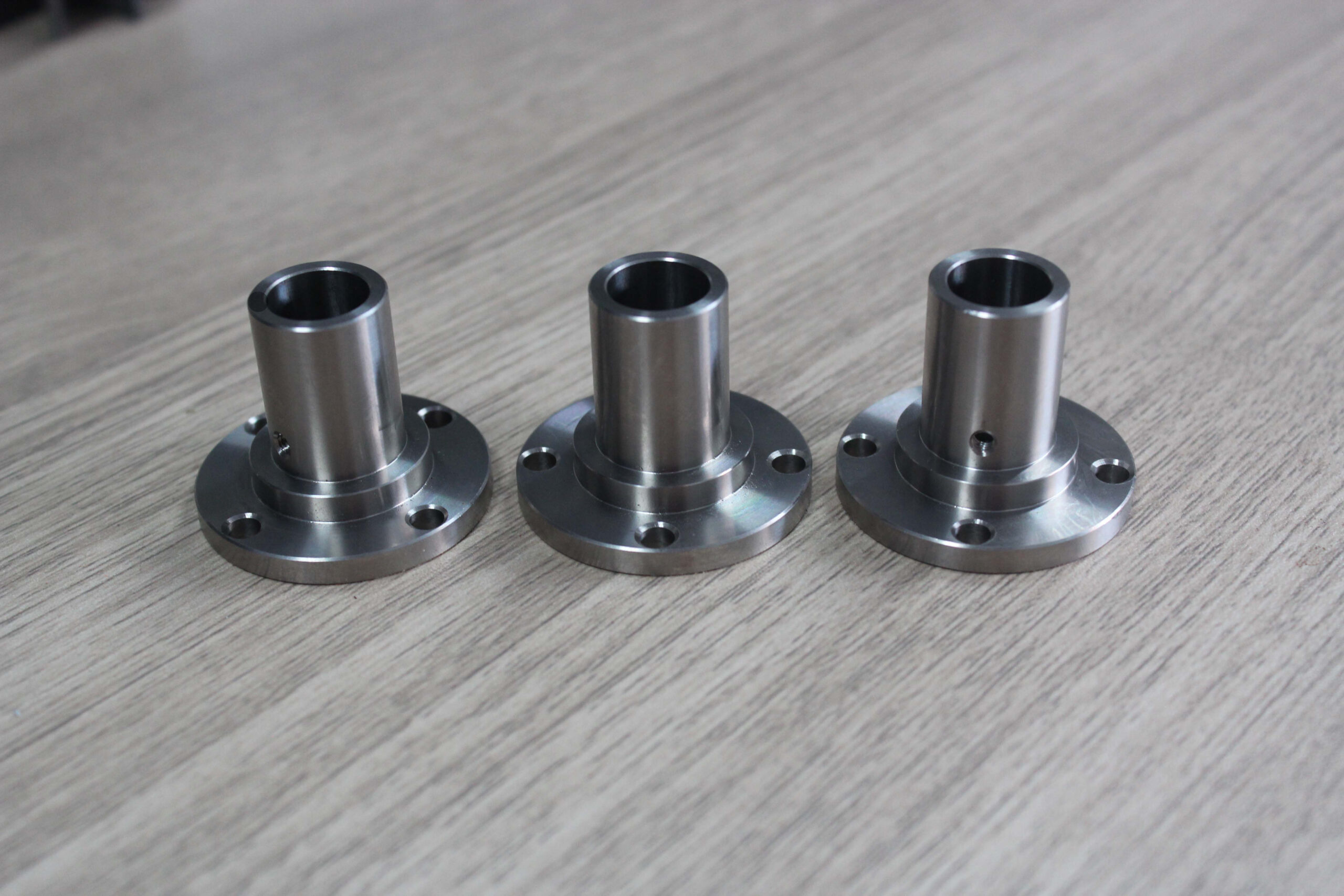
Titanium Alloy Grade 1
Features: Excellent corrosion resistance, good ductility, and cold formability. It has the highest purity and is the softest titanium alloy.
Applications: Chemical processing, marine applications, medical implants, and architectural applications.
Titanium Alloy Grade 2
Features: Good balance of strength, ductility, and weldability. Excellent corrosion resistance.
Applications: Chemical processing, marine applications, aerospace components, and medical implants.
Titanium Alloy Grade 4
Features: Highest strength of commercially pure titanium alloys, excellent corrosion resistance, and good formability.
Applications: Aerospace components, medical implants, and industrial applications.
Titanium Alloy Grade 5 (Ti-6Al-4V)
Features: High strength, lightweight, excellent corrosion resistance, and good fatigue resistance. Most widely used titanium alloy.
Applications: Aerospace components, biomedical implants, marine applications, and automotive components.
Plastics

Polycarbonate (PC)
Features: Good impact resistance, toughness, and ease of machining. Moderate cost and good surface finish.
Applications: Automotive components, enclosures, prototypes, and consumer products.
Polyethylene (PE)
Features: High impact strength, transparency, good dimensional stability, and heat resistance.
Applications: Safety glasses, electronic housings, automotive parts, and lighting fixtures.
Polyoxymethylene (POM/Delrin)
Features: Excellent chemical resistance, low friction, good impact resistance, and low moisture absorption.
Applications: Containers, pipes, cutting boards, and automotive parts.
Acrylonitrile Butadiene Styrene (ABS)
Features: Good chemical resistance, fatigue resistance, and low density. Resistant to cracking and stress.
Applications: Automotive parts, living hinges, medical components, and packaging.
Polypropylene (PP)
Features: High mechanical strength, rigidity, low friction, and good dimensional stability.
Applications: Gears, bearings, bushings, and precision parts.
Polytetrafluoroethylene (PTFE/Teflon)
Features: Excellent chemical resistance, low friction, high-temperature resistance, and non-stick properties.
Applications: Seals, gaskets, insulators, and non-stick coatings.
Polyethylene Terephthalate (PET)
Features: Good dimensional stability, high strength, low moisture absorption, and good chemical resistance.
Applications: Bottles, mechanical parts, food packaging, and textiles.
Polyvinyl Chloride (PVC)
Features: High chemical resistance, good mechanical properties, and ease of machining. Available in rigid and flexible forms.
Applications: Pipes, fittings, valves, electrical enclosures, and signs.
Nylon (PA)
Features: High strength, good wear resistance, low friction, and good chemical resistance. Available in various grades.
Applications: Gears, bearings, bushings, and structural components.
Acrylic (PMMA)
Features: High transparency, good impact strength, weather resistance, and ease of machining.
Applications: Display cases, lenses, light fixtures, and signs.
Available CNC Machining Surface Finishes
Surface finishes are critical in CNC machining as they affect the appearance, functionality, and performance of the final product. Here are some common surface finishes used in CNC machining.
These surface finishes offer a range of options depending on the requirements for appearance, corrosion resistance, wear resistance, and other functional properties.

As-Machined
- Description: The surface finish directly from the CNC machine without any additional processing. Tool marks and machining lines are visible.
- Ra Value: 3.2 µm (125 µin)
- Applications: Internal components, parts not requiring aesthetic appeal, and prototypes.

Bead Blasting
- Description: A surface finishing process where small glass beads or other abrasive materials are blasted onto the part’s surface to create a smooth, matte finish.
- Ra Value: 1.6-3.2 µm (63-125 µin)
- Applications: Aesthetic parts, removal of tool marks, and preparation for painting or coating.

Anodizing
- Description: An electrochemical process that converts the metal surface into an anodic oxide finish. Commonly used for aluminum parts, it can be clear or colored.
- Ra Value: Varies (usually between 0.8-1.6 µm or 32-63 µin)
- Applications: Aerospace, automotive, consumer electronics, and decorative parts.

Powder Coating
- Description: A dry finishing process that involves the application of a powdered paint onto the part’s surface, which is then cured under heat to form a solid, durable finish.
- Ra Value: Varies (depends on powder type and application method)
- Applications: Consumer products, automotive components, and industrial equipment.
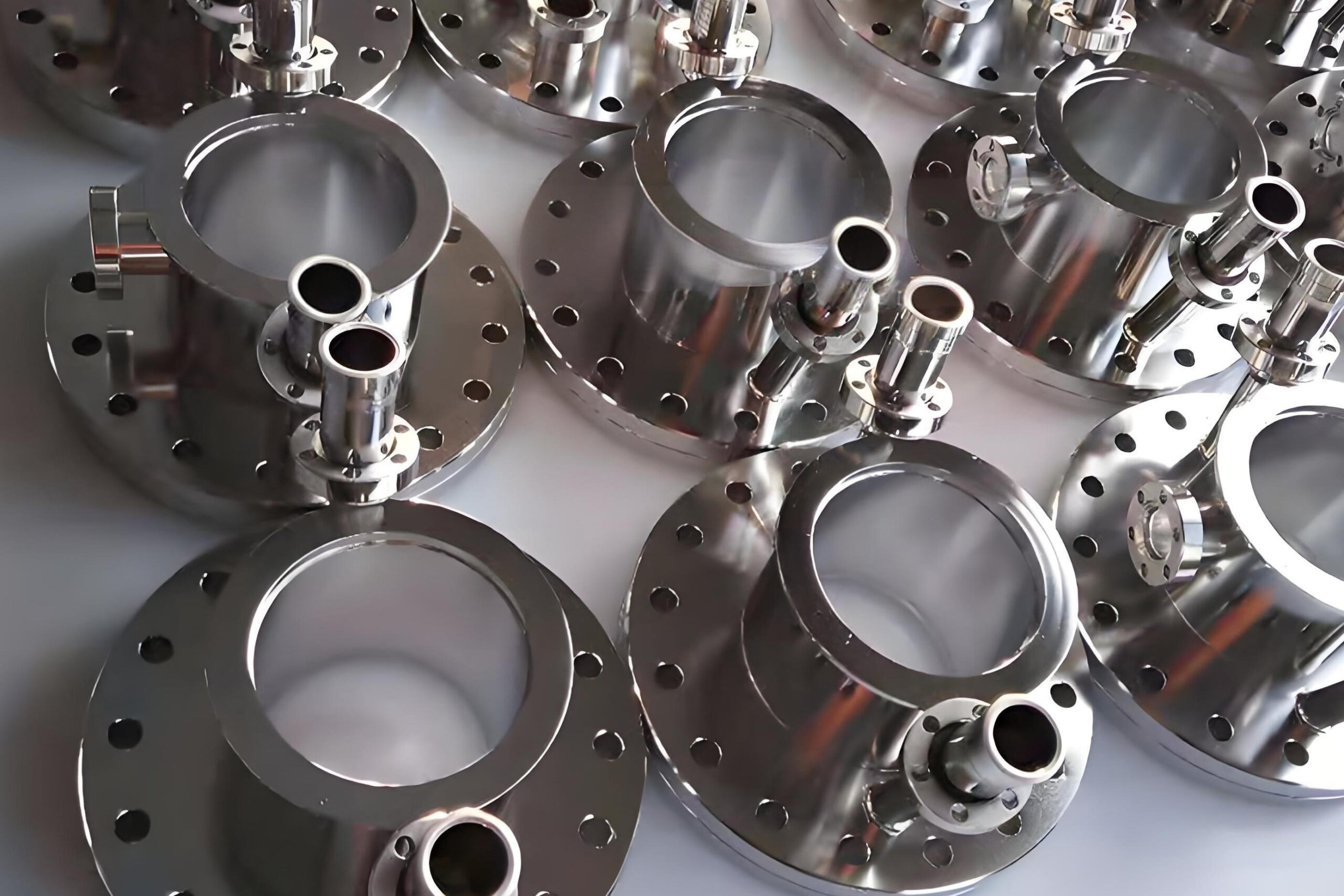
Electropolishing
- Description: An electrochemical process that removes a thin layer of material from the part’s surface, resulting in a smooth, shiny finish. It also improves corrosion resistance.
- Ra Value: 0.4-1.6 µm (16-63 µin)
- Applications: Medical devices, food processing equipment, and semiconductor components.

Brushing
- Description: A surface finishing process where abrasive brushes are used to create a uniform, directional satin finish.
- Ra Value: 0.8-1.6 µm (32-63 µin)
- Applications: Decorative parts, consumer electronics, and architectural components.

Polishing
- Description: A mechanical process that involves rubbing the part’s surface with an abrasive material to create a high-gloss, mirror-like finish.
- Ra Value: 0.025-0.2 µm (1-8 µin)
- Applications: Decorative parts, optical components, and high-precision equipment.

Plating
- Description: A process where a thin layer of metal (such as nickel, chrome, or gold) is deposited onto the part’s surface to improve appearance, corrosion resistance, and wear resistance.
- Ra Value: Varies (depends on plating material and process)
- Applications: Electronics, automotive components, and decorative parts.

Passivation
- Description: A chemical treatment used on stainless steel parts to remove free iron and enhance corrosion resistance by creating a passive oxide layer.
- Ra Value: No significant change
- Applications: Medical devices, food processing equipment, and marine components.

Painting
- Description: The application of paint or lacquer to the part’s surface for aesthetic purposes and protection against corrosion and wear.
- Ra Value: Varies (depends on paint type and application method)
- Applications: Consumer products, automotive components, and industrial equipment.
ProtoTi CNC Machining General Specifications
| Material Compatibility | Types of CNC Machines | Max Part Size | Surface Finishes |
|---|---|---|---|
Metals:
|
CNC Milling:
|
|
|
Plastics:
|
CNC Routing:
|
|
|
Composites:
|
CNC Grinding:
|
|
|
ProtoTi CNC Machining General Specifications
| General Tolerances | Dimensional Tolerances | Geometric Tolerances | Surface Roughness |
|---|---|---|---|
|
|
|
|
5 Steps to Get Quote & Order
Instant Quote & Order

Step 1. File Upload
Upload your 3D files on Instant Quote page. Format supported: STL, STP, STEP, OBJ, IGS, IGES, ZIP.

Step 2. Configuration
Configure your part specification and add to cart one by one.

Step 3. Check Out
Confirm all parts in your cart and check out with online payment.

Step 4. Production & Quality Check
Let us handle the manufacturing and quality check and prepare for shpping.

Step 5. Delivery & Support
We will select the best way for global shipping. No limit to DHL, UPS, Fedex ect..
BOM Quote & Order

Step 1. File Upload
Submit your 3D, 2D files & BOM (if needed) to us online or via Email. Format supported: STEP | STP | SLDPRT | STL | DXF | X_T | X_B | CATPART | SAT | OBJ

Step 2. Receive Tailored Quote
We’ll provide a comprehensive quote within 24 hours, outlining costs, timelines, and key deliverables.

Step 3. Collaborate with Our Experts
Free DFM if needed. Work with our engineering and production teams to finalize designs and address any technical questions, ensuring all aspects aligned with your vision.

Step 4. Production & Quality Check
We commence production, maintaining stringent quality control processes to ensure each product meets our high standards. Regular updates will keep you informed throughout.

Step 5. Delivery & Support
Upon completion, your products are carefully packaged and shipped. We offer ongoing support to address any post-delivery questions or needs, ensuring your complete satisfaction.
Why ProtoTi
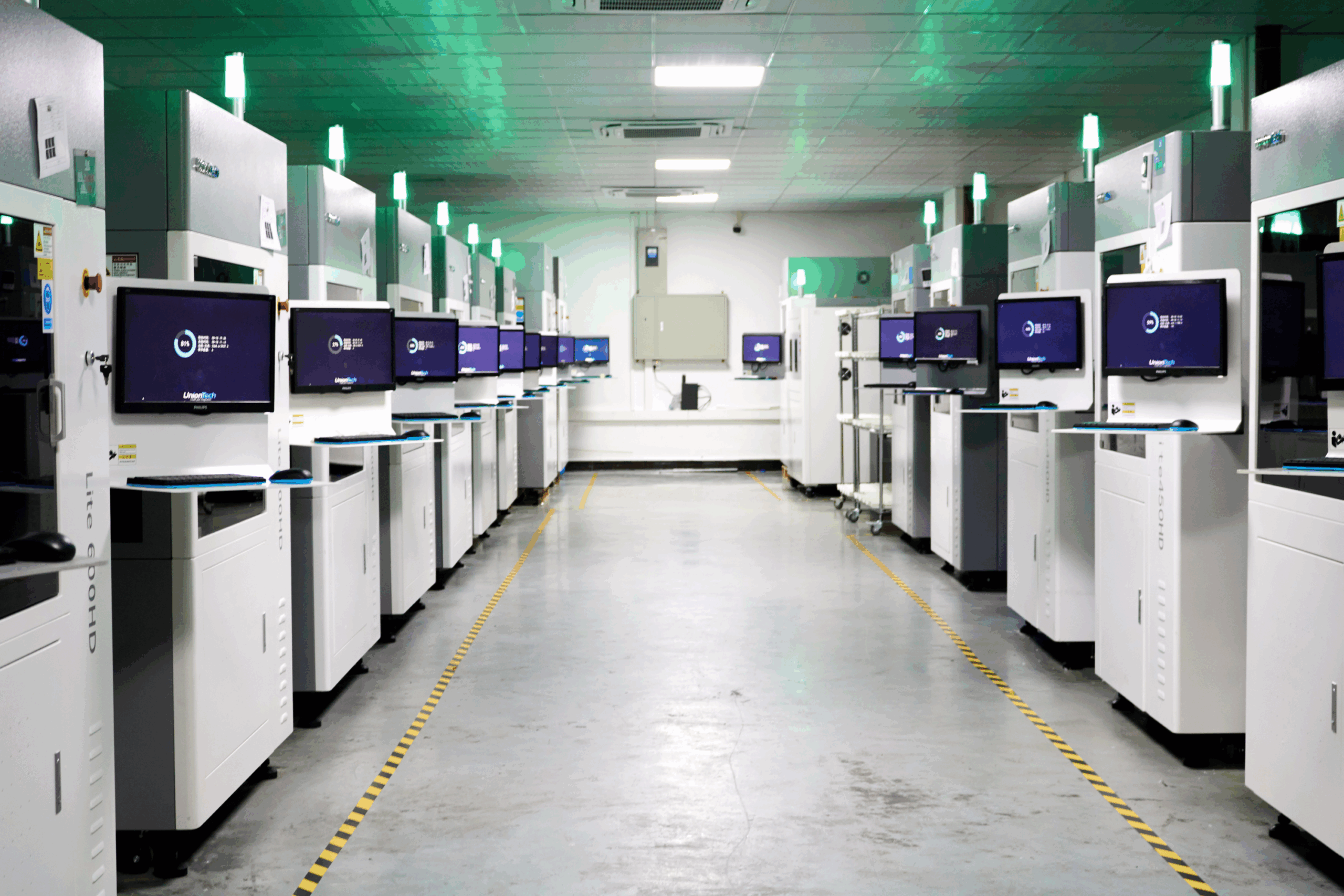
In House Production Capacity
Our in-house production ensures superior quality control and faster turnaround times, eliminating delays. We offer flexible, customized solutions and competitive pricing by reducing outsourcing costs. Seamless team communication ensures smooth workflow and rapid issue resolution. Enhanced security protects your sensitive information, while minimizing supply chain risks ensures reliable production. Continuous innovation with the latest technologies consistently improves efficiency and quality.
Extensive Supplier Network
Leverage our extensive supplier network to access a wide range of high-quality materials and services. We ensure fast, reliable sourcing and competitive pricing, enabling you to meet your manufacturing needs efficiently and cost-effectively. Benefit from our strong partnerships and streamlined supply chain management for superior project outcomes.


Professional Engineering Support
Our professional engineering support offers expert guidance at every stage of your project. From initial design to final production, our experienced engineers ensure optimal performance, precision, and efficiency. Leverage our technical expertise and innovative solutions to overcome challenges and achieve your manufacturing goals with confidence and excellence.
Quality Assurance
Our quality assurance guarantees the highest standards in every product we deliver. Through rigorous testing and meticulous attention to detail, we ensure consistency, reliability, and excellence. Trust our commitment to quality to meet and exceed your expectations on every project.

CNC Machining FAQs
CNC machining can handle a wide range of materials, including metals (aluminum, steel, titanium, brass, etc.), plastics (ABS, polycarbonate, nylon, etc.), composites, and more.
Standard CNC machining tolerances are typically around ±0.005" (±0.127 mm), but tighter tolerances of ±0.001" (±0.025 mm) can be achieved depending on the specific requirements and material.
CNC machining offers higher precision, better surface finishes, and stronger parts due to solid material removal. It's suitable for both prototyping and production. 3D printing excels in complex geometries, rapid prototyping, and lower material waste.
Lead times can vary depending on the complexity and volume of the order, but typical turnaround times range from a few days to a couple of weeks. Urgent requests may be accommodated with expedited services.
Costs depend on factors like material, complexity, tolerances, and volume. Generally, CNC machining is more cost-effective for low to medium-volume production compared to other manufacturing methods.
Commonly accepted file formats include STEP (.stp), IGES (.igs), and STL (.stl). Other formats like DXF and DWG are also accepted for 2D designs.
Available surface finishes include as-machined, bead blasting, anodizing, powder coating, electropolishing, brushing, polishing, plating, and painting.
Yes, CNC machines, especially 4-axis and 5-axis machines, can produce very complex geometries with high precision.
The maximum size depends on the machine's work envelope. Typical CNC machines can handle parts up to several feet in each dimension, but larger parts may require specialized equipment.
CNC machining offers higher precision, repeatability, and efficiency. It allows for complex geometries and automated production, reducing manual labor and human error.
CNC machining is used in various industries, including aerospace, automotive, medical, electronics, consumer products, and industrial machinery.
Yes, CNC machining is suitable for both prototyping and full-scale production runs.
Other Manufacturing Capabilities from ProtoTi

Sheet Metal Fabrication
- Laser Cutting, Bending, Post Processing.
- 20+ materials: Aluminum, Stainless Steel, Carbon Steel, Brass, Copper, Plastic, and more.
- Tolerance down to ±0.1mm.

Vacuum Casting
- Silicon Mold Making, Low Volume Prototyping.
- 5+ materials: PC, ABS, PP, PMMA, Rubber, TPU.
- Tolerance down to ±0.1mm.

3D Printing
- SLA, SLS, SLM, MJF, DLMS, DLP, FDM.
- 30+ materials: Resin, Nylon, Metal.
- Tolerance ±0.3mm or ±0.3%.
- Lead time from 1 business day.




